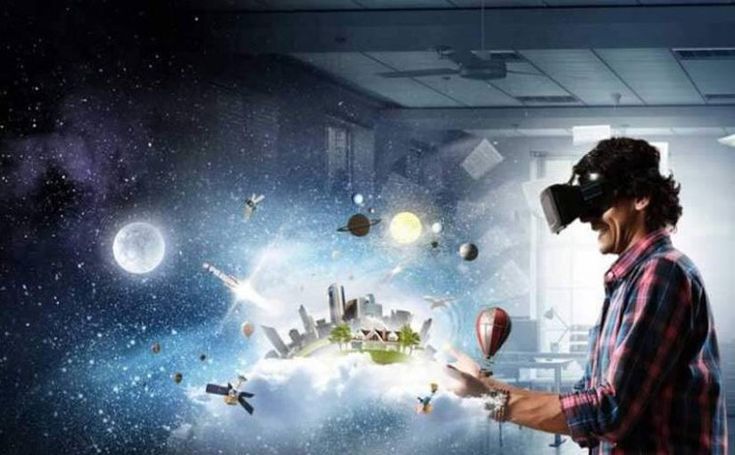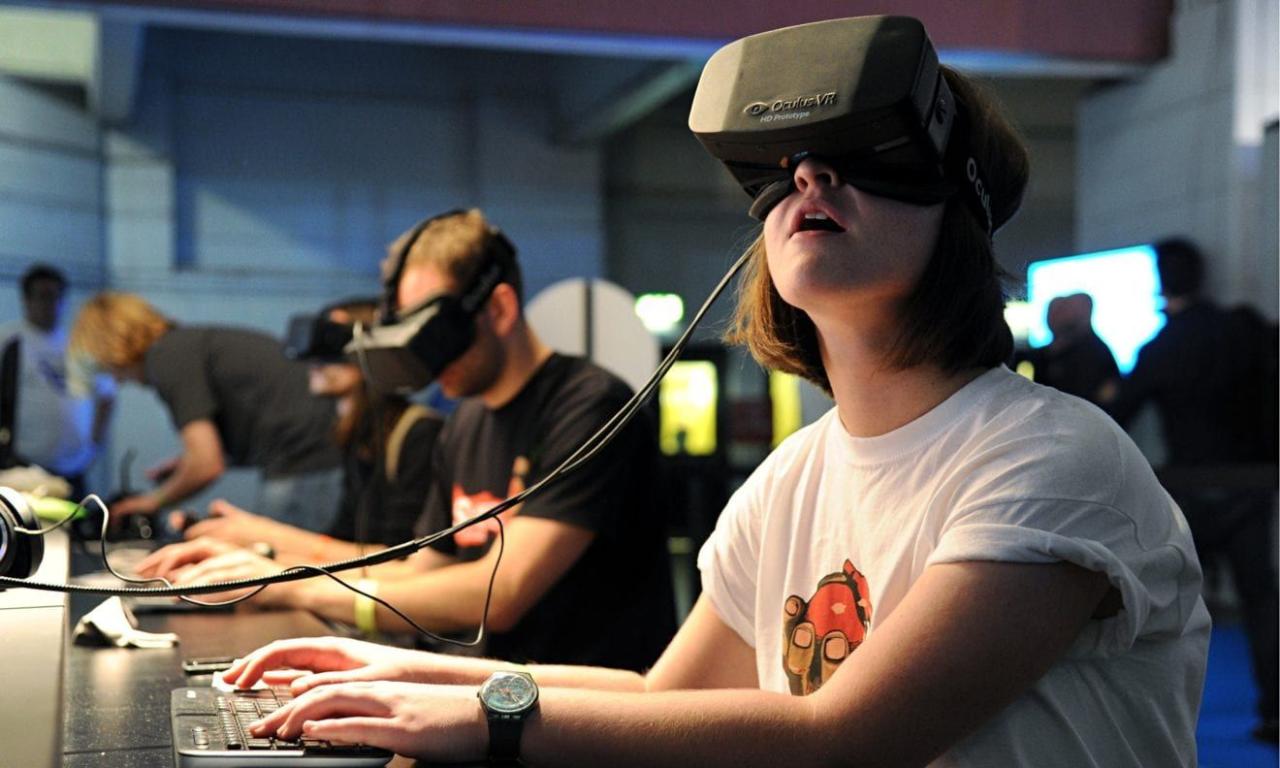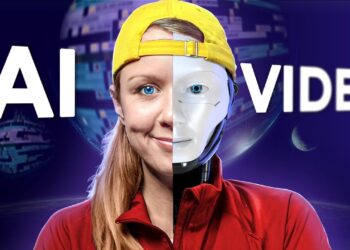1. Virtual Reality and Its Impact
The evolution of virtual reality is a narrative of technological breakthroughs and creative applications that have transcended traditional digital entertainment. What began as experimental technology is now synonymous with immersive experiences that simulate real-world environments and fantastical realms. The convergence of advanced computer graphics, motion tracking, and intuitive user interfaces has redefined how we interact with digital media.
The implementation of VR across various sectors has opened up exciting possibilities. For instance, in healthcare, VR tools are aiding in pain management and surgical training; in education, they help create immersive learning environments that enhance student engagement; while in the realm of architecture and design, VR facilitates interactive modeling and real-time collaboration.
Emerging VR tools are not just about improved graphics or reduced latency—they incorporate artificial intelligence, haptic feedback, and spatial computing, which together create a more integrated and realistic experience for users.
2. The Evolution of Virtual Reality: A Brief History
The journey of virtual reality technology can be divided into several phases:
-
Early Experiments: In the 1960s and 1970s, VR technology started with rudimentary experiments such as sensorama machines and head-mounted displays (HMDs). These prototypes laid the foundation for future innovations.
-
Commercial Expansion: During the late 1980s and 1990s, commercial VR systems emerged primarily in military and industrial applications, where simulated environments could train pilots or design complex machinery.
-
Consumer Adoption: The advent of affordable, high-quality VR headsets in the 2010s, most notably through devices like the Oculus Rift and HTC Vive, transformed VR into a consumer-friendly medium.
-
Modern Developments: Today, the rise of standalone devices, advancements in wireless technology, and the integration of AI have catalyzed the next generation of VR tools. These emerging technologies not only enhance user experience but also expand the potential applications in various domains.
The progression from clunky, low-resolution displays to sleek, high-definition immersive environments illustrates the rapid pace of innovation in virtual reality. Each stage of this evolution has contributed to developing robust systems that can meet the demands of modern applications.
3. Core Hardware Innovations Driving VR Tools
Emerging VR tools owe much of their transformative power to significant advancements in hardware. The following sections detail these innovations:
3.1. VR Headsets and Displays
Modern VR headsets are designed to be lighter, more ergonomic, and far more powerful than their predecessors. They now offer high-resolution displays, wider fields of view, and reduced latency, ensuring a more natural and immersive experience for users.
Key improvements include:
A. Resolution and Refresh Rate:
New VR headsets often feature ultra-high resolutions (4K per eye in some models) and high refresh rates (up to 120Hz or more), which contribute to a smoother, more convincing immersive experience.
B. Standalone Functionality:
The evolution from tethered to standalone VR headsets, such as Oculus Quest, has allowed users greater freedom of movement without requiring a connection to a high-performance PC.
C. Ergonomics:
Advances in ergonomic design and weight distribution have made modern headsets more comfortable, enabling extended use without undue strain.
D. Tracking and Sensors:
Built-in sensors and sophisticated tracking mechanisms, including inside-out tracking, have enhanced precision and responsiveness. These improvements significantly reduce motion sickness—a common issue in earlier iterations.
E. Haptic Feedback Integration:
Some newer headsets incorporate haptic systems that simulate tactile sensations, further blurring the line between the virtual and the physical.
3.2. Controllers and Interaction Devices
Interaction tools have grown more sophisticated as VR experiences demand intuitive input methods. Controllers are no longer just simple input devices—they are highly dynamic, multifunctional tools capable of tracking hand gestures and providing detailed feedback.
A. Advanced Motion Controllers:
These devices capture intricate hand movements with high fidelity and translate them into corresponding actions in the virtual environment.
B. Gloves and Wearable Devices:
Emerging VR tools now include wearable gloves that provide tactile feedback and emulate the sense of touch. This technology allows users to “feel” virtual objects, making the experience significantly more immersive.
C. Voice and Gesture Recognition:
The integration of voice commands and gesture recognition into VR controllers has streamlined user interactions, reducing reliance on traditional input methods.
3.3. Sensors and Cameras
Sensors and cameras are critical for tracking the user’s environment and translating physical movements into VR. The latest sensor technology supports enhanced depth perception and spatial awareness, crucial for reducing lag and increasing immersion.
A. Infrared Cameras:
Infrared cameras track movement with high precision, making it possible to create seamless interactions between users and virtual elements.
B. Depth Sensors:
These sensors measure the distance between the user and objects in the environment, enabling more realistic interactions in VR applications such as gaming and simulation.
C. Integrated AI:
Recent advances incorporate AI algorithms to predict and compensate for user motion, resulting in smoother and more accurate tracking.
4. Software Platforms and Development Tools in VR
Hardware innovations are complemented by equally significant software advancements. The VR software ecosystem is flourishing with powerful development platforms and engines that simplify the creation of immersive experiences. These software tools are critical for content creators who wish to leverage the full potential of VR.
4.1. VR Development Engines
Modern development engines provide robust frameworks for creating complex VR worlds. Two of the most influential platforms in this space are:
A. Unity 3D:
Widely adopted in the gaming and simulation industries, Unity offers extensive VR support, a user-friendly interface, and a vast ecosystem of plugins and assets. Its flexibility and cross-platform capabilities make it one of the top choices for VR development.
B. Unreal Engine:
Known for its high-fidelity graphics and powerful performance, Unreal Engine is another leading tool in VR development. Its Blueprint visual scripting system allows developers to build interactive VR experiences without needing extensive programming expertise.
4.2. Cross-Platform Frameworks
Cross-platform development frameworks facilitate the creation of VR experiences that work seamlessly on various devices. They provide standardized APIs to manage hardware differences and ensure consistent performance across systems.
A. WebXR:
The WebXR Device API allows developers to build VR applications that run directly in web browsers, bridging the gap between traditional web content and immersive VR experiences. Its ability to support both VR and augmented reality (AR) applications makes it exceptionally versatile.
B. OpenXR:
Developed by the Khronos Group, OpenXR is an open standard designed to unify access to VR and AR platforms. It streamlines the development process by offering a common interface for various hardware systems, which reduces the complexity of multi-platform deployment.
4.3. Artificial Intelligence in VR
Artificial intelligence has begun to play a transformative role in shaping VR experiences. Emerging tools now integrate AI to enhance interactivity, realism, and personalization. Some key applications include:
A. Content Personalization:
AI algorithms can analyze user behavior in real-time to deliver personalized virtual experiences. For example, VR training programs can dynamically adjust scenarios based on the learner’s performance.
B. Real-Time Environment Adaptation:
AI can modify virtual environments based on user interactions and feedback, ensuring that the experience remains engaging and contextually relevant.
C. Enhanced NPC Behaviors:
Non-player characters (NPCs) in VR simulations can be made more lifelike with AI-driven decision-making processes, resulting in more realistic and natural interactions.
5. Integration of Augmented Reality (AR) and Mixed Reality (MR) Technologies
The boundaries between VR, augmented reality (AR), and mixed reality (MR) are becoming increasingly blurred. Many emerging tools now support hybrid experiences that combine elements of all three domains. This integration expands the scope of digital experiences by merging the physical with the virtual.
5.1. Augmented Reality Enhancements
AR overlays digital content onto the physical world, offering unique opportunities for both consumers and professionals. The convergence of AR and VR is particularly evident in the following tools:
A. Spatial Mapping and Environmental Understanding:
New VR headsets are being equipped with spatial mapping capabilities that allow the device to understand the physical environment. This data can be used to seamlessly integrate virtual objects into real-world settings.
B. Collaborative Workspaces:
AR-enhanced VR tools enable multiple users to interact with both virtual and physical elements simultaneously, providing a rich platform for collaboration in fields such as design and remote education.
5.2. Mixed Reality Innovations
MR combines the immersive aspects of VR with the real-world interactivity of AR. It allows users to see and manipulate both virtual and real objects in a dynamic environment. Emerging MR tools incorporate advanced tracking, gesture recognition, and natural user interfaces.
A. Integrated Sensor Fusion:
Mixed reality devices use multiple sensors and cameras to blend the virtual and physical environments effectively. This ensures that virtual objects remain anchored in the real world, regardless of movement or lighting changes.
B. Application in Training and Simulation:
MR is being adopted in sectors like military training and surgical planning, where accurate spatial awareness is critical. The ability to manipulate real-world objects alongside virtual counterparts enhances the realism and effectiveness of training sessions.
C. Hybrid User Interfaces:
Developers are creating interfaces that integrate traditional control methods with gesture-based interactions. This hybrid approach optimizes user engagement and efficiency, making MR tools more accessible and user-friendly.
6. The Role of Cloud Computing and Edge Technology in VR
As VR experiences become more graphically intensive and interactive, the need for robust computing solutions has increased. Cloud computing and edge technology offer promising solutions by offloading heavy processing tasks from local devices.
6.1. Cloud Rendering
Cloud rendering has emerged as a game-changer for VR applications, particularly for users who do not have access to high-end hardware. By streaming rendered content from powerful remote servers, cloud rendering allows users to enjoy high-fidelity VR experiences on modest devices.
A. Scalability:
Cloud platforms can scale resources dynamically based on demand, ensuring a smooth experience even during peak usage times.
B. Reduced Hardware Requirements:
Offloading rendering tasks to the cloud means that lower-end devices can run resource-intensive VR applications, thereby democratizing access to immersive experiences.
C. Real-Time Collaboration:
Cloud-based systems enable collaborative VR environments where multiple users can interact in real-time, regardless of the processing power of their local machines.
6.2. Edge Computing
Edge computing complements cloud rendering by processing data closer to the user, reducing latency, and increasing real-time responsiveness—a critical factor in VR.
A. Latency Reduction:
By processing data at the edge of the network, VR applications can achieve near real-time performance, thus improving the overall sense of immersion.
B. Enhanced Security:
Edge computing also provides improved security by keeping sensitive data closer to the user, reducing the risks associated with centralized cloud servers.
C. Cost Efficiency:
Using edge resources can be more cost-effective for applications requiring rapid data processing and low latency, especially in distributed VR environments.
7. Applications of Emerging VR Tools in Various Industries
Emerging VR tools are not confined to gaming and entertainment. Their application spans multiple sectors, driving innovation in both professional and consumer domains. Let’s explore some of the most notable applications:
7.1. Healthcare
VR is revolutionizing healthcare by providing tools that enhance diagnostics, treatment, and training.
A. Surgical Simulation:
Surgeons can practice complex procedures in a risk-free, simulated environment, thereby improving their skills and reducing errors in the operating room.
B. Pain Management and Therapy:
Virtual environments offer distraction therapy and immersive experiences that help manage pain, anxiety, and phobias in patients.
C. Medical Education:
VR enables medical students to study human anatomy interactively, offering experiences that are not possible with traditional learning methods.
7.2. Education and Training
Immersive VR tools have shown tremendous potential in transforming the education sector.
A. Interactive Learning Environments:
Virtual classrooms and laboratories provide engaging learning experiences that encourage participation and retention of information.
B. Professional Training:
Industries such as aviation, manufacturing, and emergency services use VR simulations to train employees in realistic, high-stakes scenarios without the associated risks.
C. Distance Education:
VR enhances remote learning by creating interactive and collaborative environments where participants can engage in real-time discussions and practical exercises.
7.3. Architecture, Engineering, and Construction (AEC)
In the AEC industry, VR tools facilitate design review, project planning, and client presentations.
A. Virtual Walkthroughs:
Architects use VR to create detailed 3D models of proposed projects, allowing clients to experience the design before construction begins.
B. Collaborative Design:
Engineers and architects can collaborate in a virtual space to iterate designs rapidly and solve complex spatial problems.
C. Project Visualization:
Immersive VR tools enable stakeholders to identify potential design flaws and make informed decisions early in the project lifecycle, thereby reducing costly changes later.
7.4. Retail and Marketing
Retail businesses are harnessing VR to provide new ways for consumers to interact with brands and products.
A. Virtual Showrooms:
Customers can explore products in a virtual space where they experience them in 3D, enhancing the online shopping experience.
B. Interactive Advertising:
VR enables advertisers to create memorable and engaging campaigns that capture the consumer’s attention in immersive ways.
C. Brand Storytelling:
Companies use immersive VR experiences to narrate their brand stories, deepening engagement and fostering customer loyalty.
7.5. Entertainment and Gaming
The entertainment industry remains at the forefront of VR innovation.
A. Immersive Gaming:
Today’s VR games offer deeply immersive worlds that enable players to interact, solve puzzles, and explore narratives in unprecedented ways.
B. Virtual Concerts and Events:
VR platforms host live events, allowing global audiences to experience concerts, sports events, and theatrical performances as if they were there.
C. Interactive Cinematic Experiences:
Filmmakers experiment with interactive storytelling, where the audience can influence the narrative and outcomes within a fully immersive environment.
8. Future Prospects for VR: Trends and Predictions

Looking ahead, the future of virtual reality appears both promising and transformative. Ongoing research and development indicate several trends that will shape the next generation of VR tools:
8.1. Increased Integration of AI and Machine Learning
AI and machine learning are set to become even more integral to VR. Future developments may include:
A. Adaptive User Interfaces:
Systems that learn and adapt to individual users’ preferences and behaviors, creating personalized virtual environments.
B. Enhanced NPC Interactivity:
NPCs (non-player characters) powered by sophisticated AI will interact with users in highly dynamic and context-aware ways, adding layers of realism to VR narratives.
C. Predictive Maintenance of Systems:
AI can be used to anticipate and resolve issues in VR hardware and software, ensuring consistent performance and reliability.
8.2. The Convergence of VR, AR, and MR
As the lines between virtual, augmented, and mixed reality continue to blur, we can expect a seamless integration across these platforms. Future tools will likely enable users to transition effortlessly between immersive environments, whether they involve digital overlays on the real world or fully simulated worlds.
A. Hybrid Immersive Experiences:
Upcoming devices may combine features of VR, AR, and MR, allowing users to interact with both virtual and physical objects within a single environment.
B. Collaborative Ecosystems:
Integrated platforms that support multi-user environments across VR, AR, and MR will encourage remote collaboration, virtual conferences, and expansive social interactions in digital spaces.
8.3. Expansion into Everyday Life and Work
Emerging VR tools will increasingly become a part of everyday life and professional work environments. As remote work grows and digital interactions become more complex, VR can provide solutions that help bridge the gap between physical and virtual collaboration.
A. Virtual Offices:
Companies are exploring virtual offices where employees can collaborate in immersive spaces that replicate in-person interactions more naturally than traditional video conferencing tools.
B. Enhanced Training Programs:
Many industries will expand the use of VR training to equip employees with realistic scenarios and hands-on practice without the inherent risks of real-world training.
C. Personalized Entertainment:
Future VR systems may also integrate with personal media preferences, tailoring experiences based on user data and creating custom entertainment options ranging from interactive movies to immersive social platforms.
9. Challenges and Opportunities in VR Adoption
Despite the rapid advancements in VR technology, several challenges remain. Addressing these challenges will not only improve the current state of virtual reality but also open up new opportunities for innovation.
9.1. Technical Challenges
A. Latency and Motion Sickness:
Even with significant improvements in tracking and rendering, latency issues can still lead to user discomfort, often manifesting as motion sickness. Continued research is required to reduce latency to imperceptible levels.
B. Hardware Costs:
High-end VR setups can be expensive. The expansion of standalone and wireless devices is making VR more accessible, but affordability remains a key factor for widespread adoption.
C. Interoperability:
With a plethora of VR platforms and ecosystems, creating a unified experience that works across various devices is a significant challenge for developers.
9.2. Content Creation and Innovation
A. Scalability of Content:
As the demand for immersive VR experiences grows, creating high-quality content on a large scale poses a challenge for content creators and developers.
B. Cross-disciplinary Expertise:
Producing immersive VR content often requires the collaboration of experts in 3D modeling, game design, AI, and psychology. Fostering interdisciplinary teams is essential to drive innovation in this space.
C. Standardization and Best Practices:
Establishing industry standards and guidelines for VR content creation can help streamline the development process and ensure high-quality experiences across different platforms.
9.3. Societal and Ethical Considerations
A. Privacy and Data Security:
As VR platforms collect more personalized data to tailor experiences, ensuring robust data security and transparency regarding data usage is paramount.
B. Health Impacts:
Long-term exposure to immersive virtual environments raises questions about potential physical and psychological effects, necessitating thorough research and regulatory oversight.
C. Digital Divide:
While VR has the potential to democratize access to immersive experiences, there is a risk that high costs and technical complexities may widen the digital divide. Efforts to create affordable solutions and accessible content must be prioritized.
10. Strategies for Harnessing Emerging VR Tools for Business Success

For businesses seeking to capitalize on the evolving landscape of virtual reality, a strategic approach is key. Enterprises must not only invest in cutting-edge hardware and software but also adopt a forward-thinking mindset toward innovation and user experience.
10.1. Embracing Innovation
A. Invest in Research and Development:
Companies should allocate resources to explore new VR technologies and stay ahead of the competition. Staying updated with trends through conferences, academic research, and industry reports is essential.
B. Foster Collaboration:
Building partnerships with tech startups, educational institutions, and industry consortia can help companies integrate innovative VR solutions into their operations more quickly and effectively.
C. User-Centric Design:
Tailoring VR experiences to meet the specific needs and preferences of end-users will be a key factor in driving adoption and sustained engagement.
10.2. Integrating VR into Marketing and Consumer Engagement
A. Virtual Product Demonstrations:
Using VR to create detailed, interactive demonstrations can differentiate a brand and provide potential customers with a deeper understanding of products.
B. Interactive Advertising:
Incorporating VR experiences in advertising campaigns can capture the attention of audiences in new and immersive ways, leading to higher engagement rates.
C. Data-Driven Personalization:
Leveraging AI within VR platforms to analyze user behavior and preferences can help businesses create highly personalized experiences that resonate with their target market.
10.3. Training and Operational Efficiency
A. Simulated Training Environments:
For industries ranging from manufacturing to emergency services, VR-based training programs offer a risk-free environment to hone skills and improve operational efficiency.
B. Real-Time Data Integration:
Integrating VR systems with enterprise data can provide workers with immersive dashboards and analytics, thereby enhancing decision-making processes.
C. Remote Collaboration:
As remote work becomes more prevalent, VR-powered virtual offices and collaboration tools are emerging as a way to maintain team cohesion and increase productivity.
11. Case Studies: Successful Deployments of Emerging VR Tools
Examining real-world examples can provide valuable insights into how emerging VR tools are being utilized across industries. The following case studies illustrate a diverse set of applications:
11.1. Healthcare Training
A pioneering hospital implemented VR surgical simulation software to improve the skills of its medical staff. The simulation provided realistic anatomical models, allowing surgeons to practice complex procedures multiple times before performing them in real-life scenarios. The program led to a measurable improvement in patient outcomes and reduced surgery times.
11.2. Architectural Visualization
A renowned architectural firm adopted a state-of-the-art VR platform to enable clients to experience 3D walkthroughs of upcoming projects. The immersive tool allowed clients to explore various design options in real-time, facilitating faster decision-making and ultimately enhancing client satisfaction and project delivery.
11.3. Retail Innovations
A major retail brand launched a virtual showroom that allowed customers to browse products in an immersive environment. This innovative approach not only increased online engagement rates but also provided valuable insights into consumer behavior, which the brand leveraged to optimize its product offerings and marketing strategies.
11.4. Education and Remote Learning
An educational institution integrated a WebXR platform into its curriculum, allowing students to participate in virtual labs and interactive lectures from remote locations. The initiative resulted in higher student engagement and improved learning outcomes, setting a new benchmark for distance education.
12. Concluding Thoughts on the Future of Virtual Reality
The future of virtual reality is bright and teeming with opportunity. Emerging tools in VR are not only pushing the boundaries of what is technically possible but are also redefining how we learn, work, and interact with our environments. As hardware becomes more accessible, software platforms more sophisticated, and integration with AI and other technologies more seamless, VR stands poised to transform everyday experiences.
In summary, the evolution of VR from its early experimental stages to today’s multifaceted ecosystem is a testament to human ingenuity and technological progress. With continued advancements, immersive digital experiences will become increasingly integrated into various aspects of our lives—driving innovation across industries and redefining the way we perceive reality itself.
As businesses and creators strive to harness the potential of these emerging tools, strategic investment in research, cross-disciplinary collaboration, and a relentless focus on user experience will be key drivers for success. The challenges that remain—ranging from technical hurdles to societal implications—represent not just obstacles, but opportunities for further innovation and growth.
The ongoing dialogue between hardware advancements, software evolution, and creative application ensures that virtual reality will remain at the forefront of digital transformation for years to come. Whether it is through enhanced interactivity, richer content, or more accessible immersive experiences, the emerging tools in VR offer a glimpse into a future where the lines between the physical and digital worlds continue to blur, ultimately redefining our understanding of reality.











